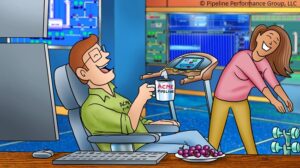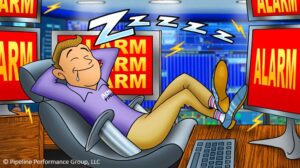“When two or more are responsible for something, usually nobody is.”
David Allen, Getting Things Done: The Art of Stress-Free Productivity 2001
“Every organization needs both a task-oriented leader and also a person-centered or social leader.”
Lyle Schaller, Getting Things Done: Concepts and Skills for Leaders 1986
I am interested in getting things done and have been studying how to get things done for many years now. I have even gotten some things done! Both of the books quoted above have been useful to me, but the one by Lyle Schaller has influenced me the most because I have read it many time and because of the 12 assumptions on which it was based. Three of those assumptions are:
- Leadership can be taught and learned.
- It is difficult to teach anyone anything that the person does not want to learn.
- Effective leaders are both willing to lead and also know how to organize for action.
Controllers are leaders of the console when on shift, and need to be taught leadership skills that should be used at all times. Controllers demonstrate leadership in person with other Controllers and in their communications with everyone. I think most companies expect Controllers to organize for action, but does your organization expect Controllers to be willing to lead. We can lead even if we do not have a defined leadership role. Be willing to learn and to lead.
Does your control room have both a task-oriented leader and a person-centered leader? Could one person be both? How would it work in your control room if there were a manager responsible for task completion and another manager responsible for leading people? That dual leadership theory has been debated since the 1940s, though seldom applied in the pipeline organizations I know. It makes lots of sense and would allow people to use their strengths. Most of us are either task-oriented or people-centered. As Schaller puts it, “both roles are needed. The first keeps the world moving. The second keeps it from flying apart.”
I have done analyses of over 50 control room organizations, and only 6% have two managers with equal titles. They divide the control room by consoles, and have similar responsibilities. 11% have a control room manager and an assistant control room manager. But I don’t think they divide responsibilities between task-orientation and people-centeredness.
I will add an assumption from the David Allen book. If your Control Room Management Plan and related documents do not clearly define who is responsible for both the tasks and the people that are necessary for CRM effectiveness, you will discover that nobody is responsible and things will not get done and effectiveness will be nil.
We see it again and again in sketchy CRM plans that do not include responsibilities for anyone except Controllers and that assume others with CRM responsibilities will know them through osmosis. I remind you that the January 23, 2017 PHMSA final rule requires that the CRM procedures define (5) The roles, responsibilities and qualifications of others with the authority to direct or supersede the specific technical actions of a controller. Does your CRM procedures address that requirement?
Use the questions below as a starting point in developing measures of CRM effectiveness related to leadership in the control room organization:
- Controllers and managers identify as leaders, and leadership skills are part of their responsibilities.
- Controllers and managers demonstrate leadership behaviors and skills and are evaluated on those behaviors and skills.
- The organization views Controllers and their managers as leaders.
- Leadership skills are taught and learned.
- Work organization and planning skills are taught and learned.
- The control room organization has individuals who have designated responsibilities for task orientation and people centeredness.
Get Things Done Effectively!



